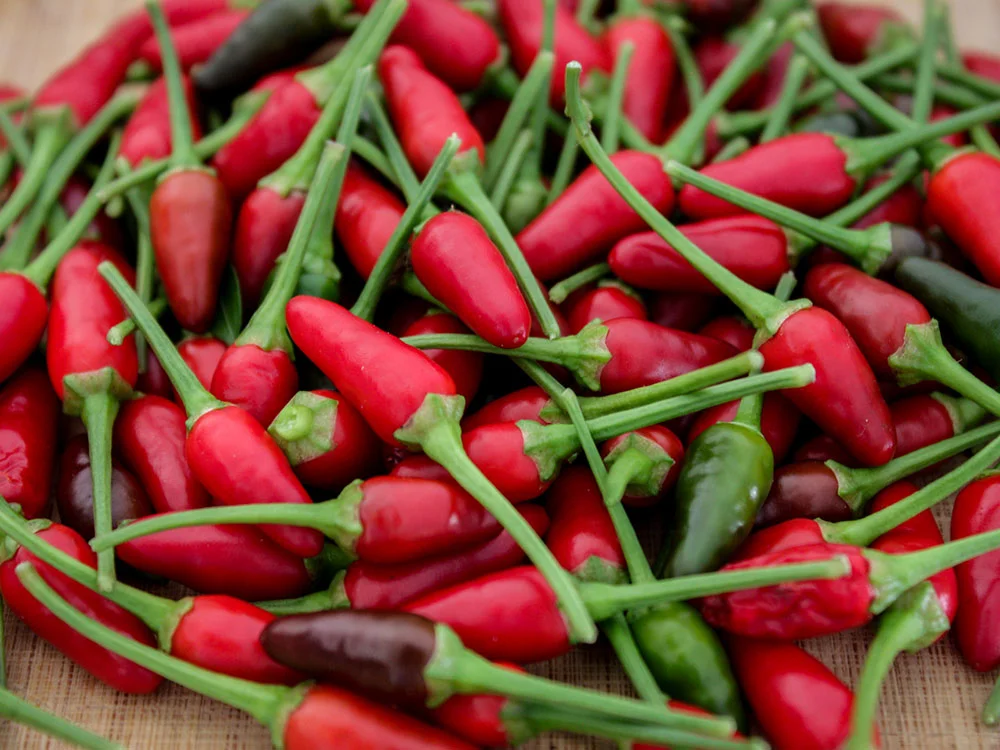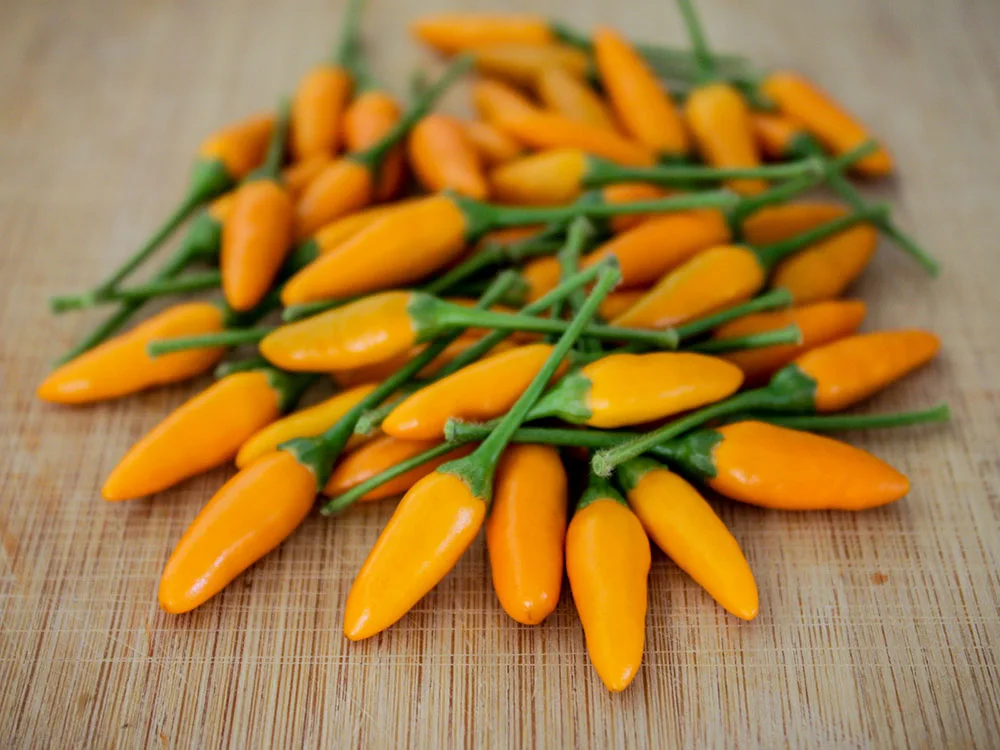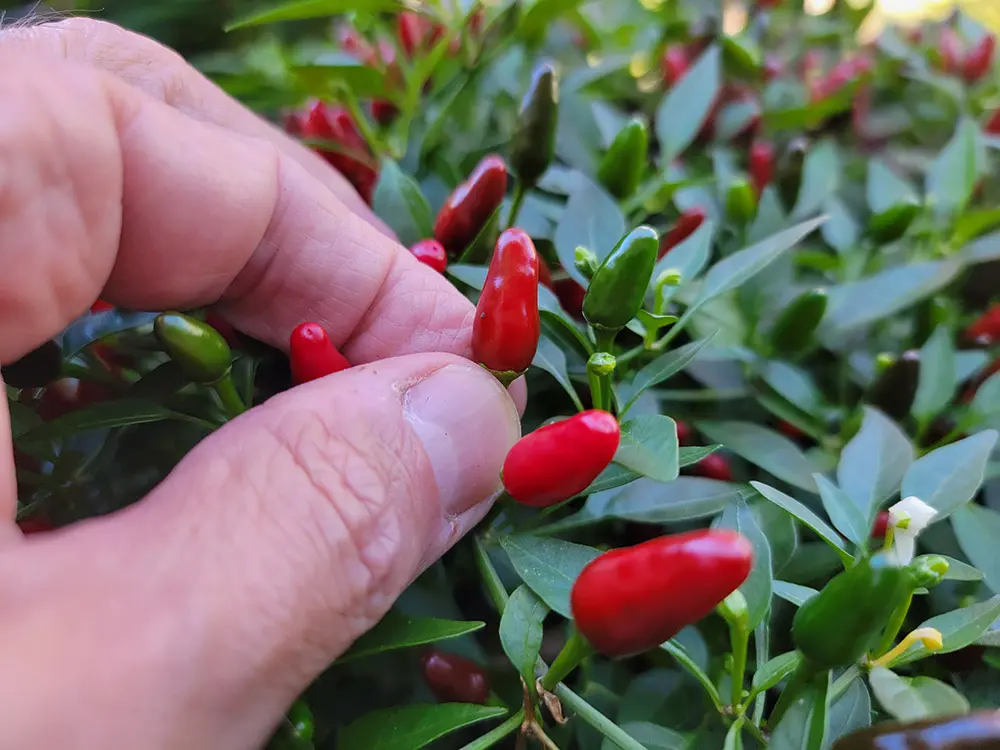Vegetable Gardening
Bird’s Eye Chilies: A Guide to Growth and Harvest Timeframes
When it comes to growing bird’s eye chilies, one of the most common questions is how long it takes for these fiery peppers to mature and be ready for harvest. In this article, we will explore the timeframes associated with the growth and harvest of bird’s eye chilies, as well as shed some light on the different varieties and the reason behind their name.
Growth and Maturity Timeframes
The time it takes for bird’s eye chilies (pictured) to grow and reach maturity can vary depending on various factors such as the specific variety, growing conditions, and climate. On average, it takes approximately 65 days for bird’s eye pepper plant to reach mature size from the time the seeds are planted. But fear not, you’ll be able to harvest a few chilies before the plant gets to full size.
During the initial stage of growth, bird’s eye chili plants will develop leaves and establish their root system. After the plants begin branching, they enter the flowering stage, where small white flowers start to appear. These flowers eventually give way to tiny green chilies.
As the chilies continue to grow, they will change color, transitioning from green to a vibrant red. The time it takes for the chilies to change color and reach their desired level of spiciness can vary, but it usually takes around 2 to 4 weeks from the appearance of the first green chilies.
It’s important to note that these timeframes are general guidelines, and the actual growth and maturity period may differ. Factors such as temperature, sunlight exposure, soil quality, and the care provided to the plants can all influence the timeline.

Bird’s Eye Pepper Seeds: Sizzling Flavor to Heat Up Your Recipes
Popular Varieties of Bird’s Eye Chilies
Bird’s eye peppers, sometimes called pequin or piri piri chilies, are known for their small size, vibrant colors, and intense heat. There are several different varieties of bird’s eye chilies, each with its own unique characteristics and flavor profiles.
The reason these chilies are called “bird’s eye peppers” is due to their small size and their resemblance to bird’s eyes. The chilies are typically round or oval-shaped and have a pointed tip, resembling the appearance of a bird’s eye.
One of the most well-known varieties is the African bird’s eye chili. This variety is native to Africa and is widely used in many African cuisines. It is known for its fruity flavor and fiery heat reaching up to 100,000 SHU on the Scoville scale. This variety is very prolific and grows in a compact shape making it a perfect choice for container gardeners.
Another popular variety is the Thai Dragon pepper. Although not a true bird’s eye pepper, the chilies are larger but do share some characteristics. As the name suggests, this variety originates from Thailand and is a staple ingredient in Thai cuisine. It has a slightly milder heat (50,000 to 100,000 SHU) compared to the African bird’s eye chili, but it still packs a punch.
Another bird’s eye that is a favorite of our customers is the African yellow pequin which grows in an upright branching manner. The foliage and branches are slightly fuzzy giving a unique appearance for those looking for unique pepper varieties. The yellow pequin packs peppers pack a punch easily reaching 100,000 SHU with a slight citrusy flavor.

African Yellow Pequin Seeds: Unleash the Exotic Taste of Pequins
Where to Find Information on Growing Bird’s Eye Peppers
If you’re interested in learning how to grow bird’s eye peppers from seed check out our blog post. The page will walk you through the process of starting your bird’s eye chili plants from seeds, providing valuable insights on soil preparation, planting depth, watering, and care.
Remember, growing bird’s eye chilies can be a rewarding experience, but it requires patience and proper care. By understanding the timeframes associated with their growth and when to harvest birds eye chillies, as well as exploring the different varieties available, you’ll be well-equipped to embark on your own chili-growing adventure.






